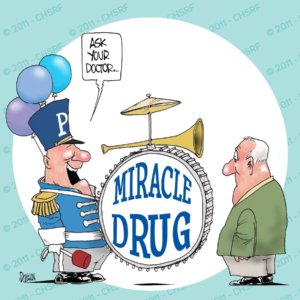
Are we remembering the drugs advertised because of the fun commercial or because the information in that commercial is informative and beneficial to us? When the commercials are cute you tend to shimmy over the more important facts being mentioned, like risks and side effects that are often hurriedly mentioned. While these should not be the focus of the commercial, they should and have to be mentioned as it’s vital safety information that all patients need to know. That’s why there are advertising drugs regulations in place, to ensure that everyone benefits in the right way and with maximum knowledge.
The subject of advertising drugs using animation is a hot debate right now and the FDA have responded by committing to conduct two studies into how animation influences consumer attitudes towards the drugs being advertised.
Let’s conduct an experiment of our own. Let’s take Xifaxan as an example. Xifaxan is a treatment for IBS (irritable bowel syndrome), the kind where the sufferer experiences diarrhea. It’s a prescription antibiotic medication that helps relieve abdominal pain and diarrhea associated with IBS-D by working its magic directly in the digestive tract. The commercials are cute and informative but after watching it how many of the warnings and side effects can you remember? They are mentioned verbally and some are written is small writing at the bottom of the screen (which is very useful) but when you recall the commercial in your head what do you really remember about it?
Take a look at the Xifaxan commercial and let us know what you think, we’re so intrigued by the great animation that we tuned out to all the information they were conveying to us. Did that happen to you?
This is exactly why the FDA are interested in running these studies. More and more drug companies are turning to animation elements in their advertising campaigns. It’s very clear that it works well and people remember the drug names because of it. We’re not just talking about Xifaxan and the cute crampy intestine that represents their brand, or the fungus fighting toenail for Jublia, in other words, more generalised medications. We’re talking about serious medications for life-threatening illnesses that are starting to use animations to convey their drugs too.
In 2015 the drug makers of Abilify also used animated commercials to convey the use of their drug to the general public. Abilify is an antipsychotic medication often used alongside anti-depressants to treat depression. People with serious mental health complications like Schizophrenia and Bipolar Disorder are the target audience for this drug. I think we can all agree that serious care needs to be taken when advertising such medications. The information presented needs to be sincere and focused on explaining about the condition and medication as well as the risks and side effects.
Take a look at this commercial for Abilify and let us know what you think of it? We actually thought this commercial devoted a significant amount of time to explaining about the product and even though it was an animated commercial it was relevant and empathetic and did the drug and its risks justice. We did switch off towards the end but the beginning definitely captured our attention. Like other animated drug commercials, it did not try to make light of the medical condition or the way the drug can help combat it. While it was animated it was still very real.
We’ll be interested to see what the FDA have to say about animation enriched advertising once they complete their experiments. It will be interesting to see what new Pharma advertising laws and restrictions get implemented because of the research being done. There are many regulations implemented when it comes to advertising drugs but so far animation isn’t really mentioned in the recommendations. With the increase in use, it definitely should be.















